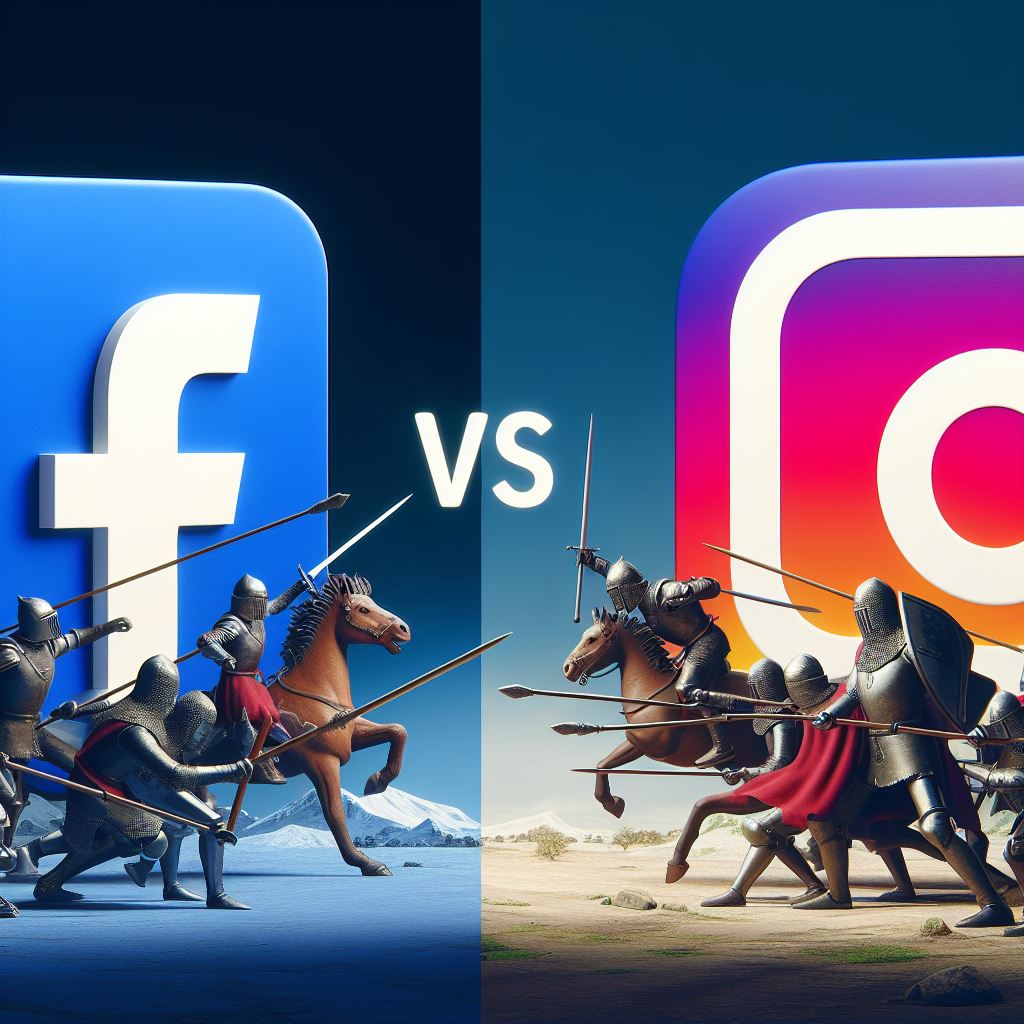Exploring the Differences of Instagram & Facebook
Instagram and Facebook are two of the most popular social media platforms used throughout the years. These sources have become a crucial tool for business owners in social media marketing. Social media has proven its effectiveness by demonstrating that approximately 27% of internet users discover new products and brands to purchase through various advertisements. Various platforms generate personally curated ads relevant to the user’s needs or preferences. This allows businesses to target users based on their interests, ultimately making it more probable for the user to purchase a certain item. Despite Facebook being around for a slightly longer time in comparison to Instagram, business owners would find it beneficial to use both of these platforms to the best of their abilities to have prosperous businesses.

Social Media Marketing Covers Wide Trajectories
It goes without mentioning that social media is an effective manner in reaching a diverse amount of people. So much so that ever since 2019, Facebook and Instagram have undergone exponential growth in users. As of recently, Facebook has acquired about 3 billion monthly active users, whereas Instagram has 1 billion monthly users. This demonstrates that about one-third of the world’s population uses said platforms or is set to join soon. Nonetheless, this worldwide impact caused by social media could be overwhelming to business owners. Due to this, some businesses tend to use filters or Booleans to direct a product to a certain audience.
What are the Differences Between Facebook and Instagram?
When further analyzing these two social media platforms, it is evident that some distinctions are present. However, it is worth noting that some businesses should not always promote their products or services on both platforms. One must take into account the following factors before making this decision:
Demographics:
- Age – The age range of Facebook and Instagram users ranges widely. To illustrate, most Millennials use both platforms regularly. However, there is a prominent presence of users over the age of 65 using Facebook. On the other hand, those who range from the ages of 18-29 favor Instagram over Facebook.
- Income – It’s reassuring for business owners to know that Facebook users representing a diverse range of household income levels can be found on the platform. Contrarily, it’s worth noting that Instagram’s user base skews towards those with a slightly higher income, as around 60% of users earn $100k or more annually. Successful businesses target specific market segments. Budget-friendly companies target lower-income households while specialized brands aim for higher-income households.
- Global Penetration – India and the US have the most Facebook users worldwide, followed by Brazil and Indonesia. This is due to factors like population size, economic status, and internet freedom levels in these countries. However, countries such as China do not have access to Facebook and Instagram.
- Engagement – Facebook has a wider audience and offers several ways for businesses to interact. Instagram has better high-volume engagement and users spend more time on company pages. Traffic from Instagram also averages longer site visits. Users can now pay to boost posts on Instagram, which includes adding a direct link to a post.
- Content – Instagram users prefer surprising and uplifting content while Facebook is better for entertaining content that can be shared easily. Use videos instead of static images as they tend to generate more engagement. Incorporate visual cues that reflect your brand’s identity to make your content recognizable. For videos, create content that can be viewed without sound, with an enticing opening that captures viewers’ attention within the first two seconds.
Conclusion
Facebook and Instagram are effective and user-friendly platforms for marketing your business. These can be helpful when creating high-quality content, analyzing metrics, and tailoring the content to the audience’s preferences. Choose between Facebook and Instagram based on your business objectives and target audience. A strategic social media plan can significantly boost brand awareness, customer engagement, and sales.
Bibliography
Shumaker, R. (2018). Instagram vs Facebook: The Main Differences You Need to Know. Sfgate.com. https://marketing.sfgate.com/blog/the-main-differences-between-facebook-and-instagram-you-need-to-know
